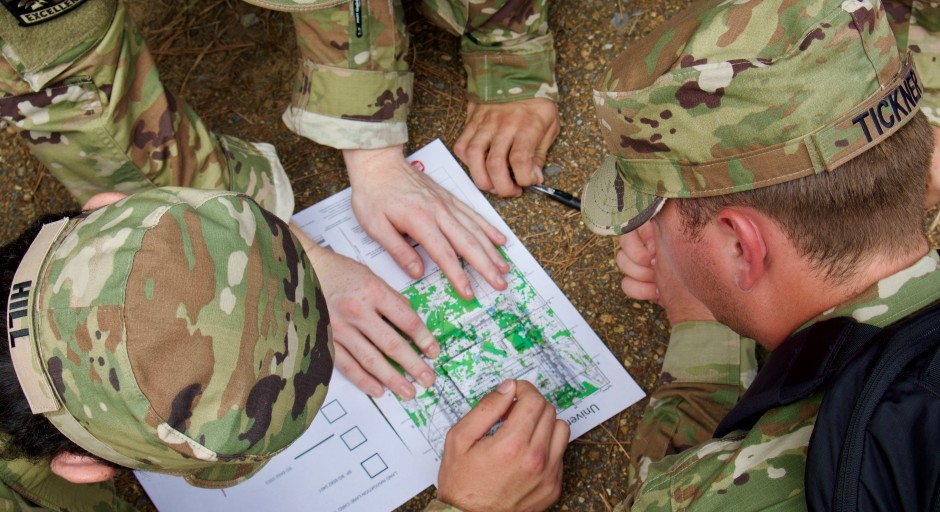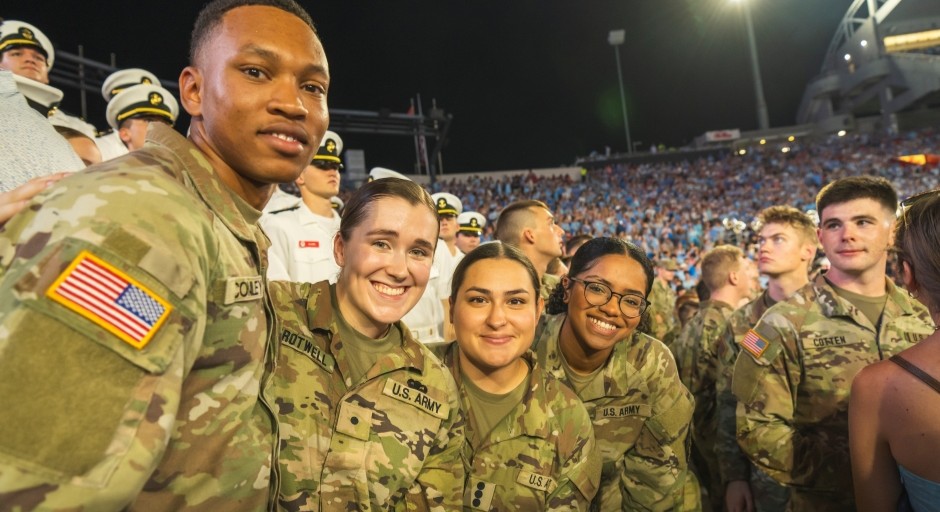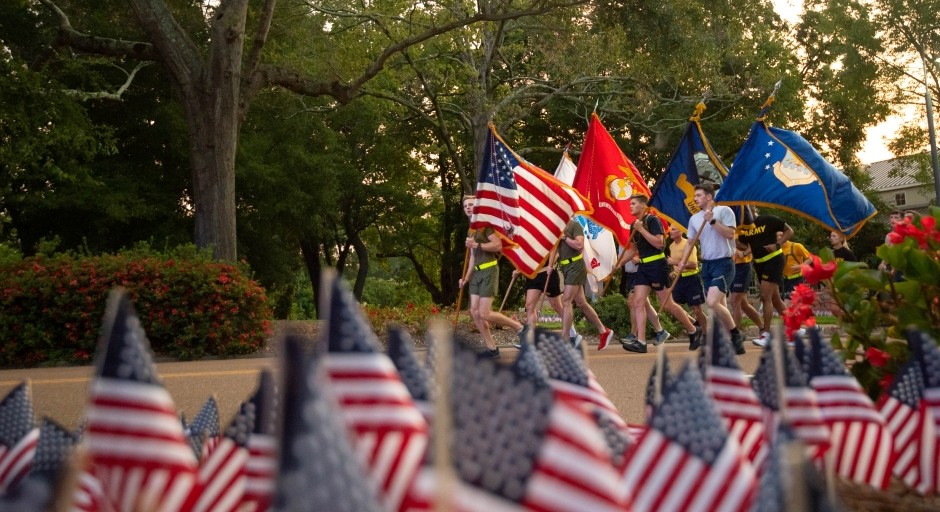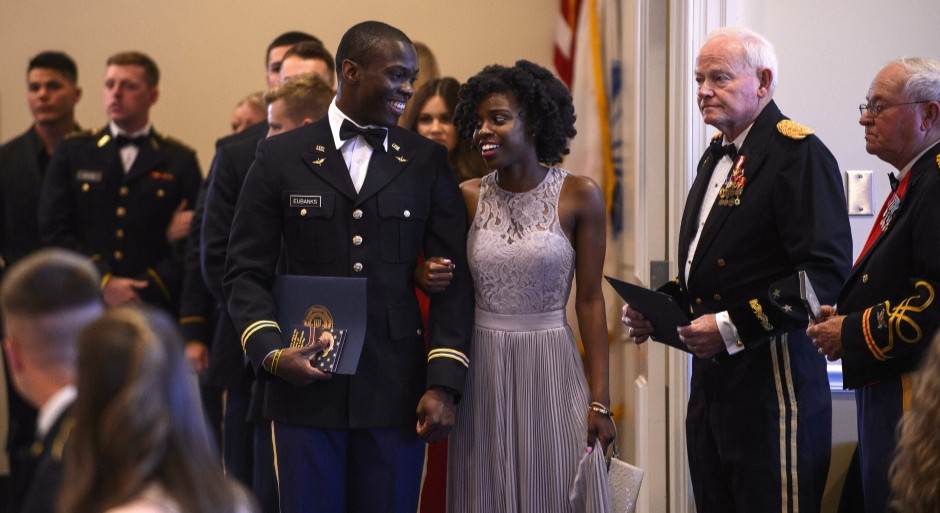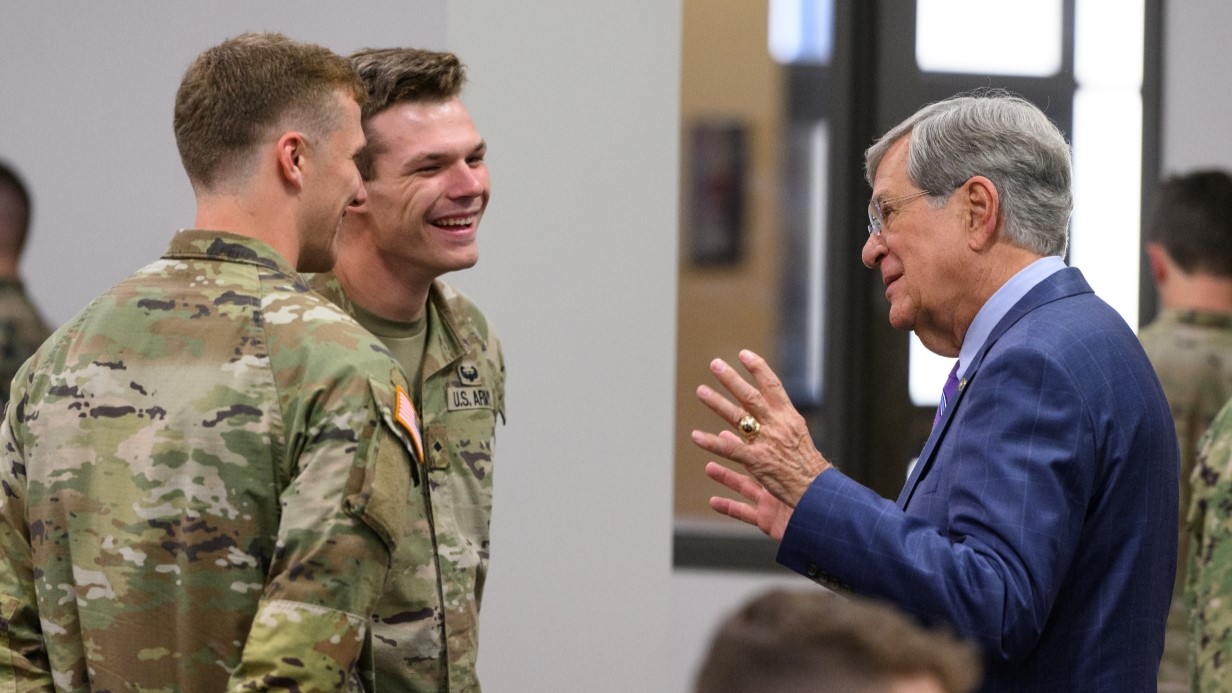Army ROTC Program
Training the Military Leaders of Tomorrow
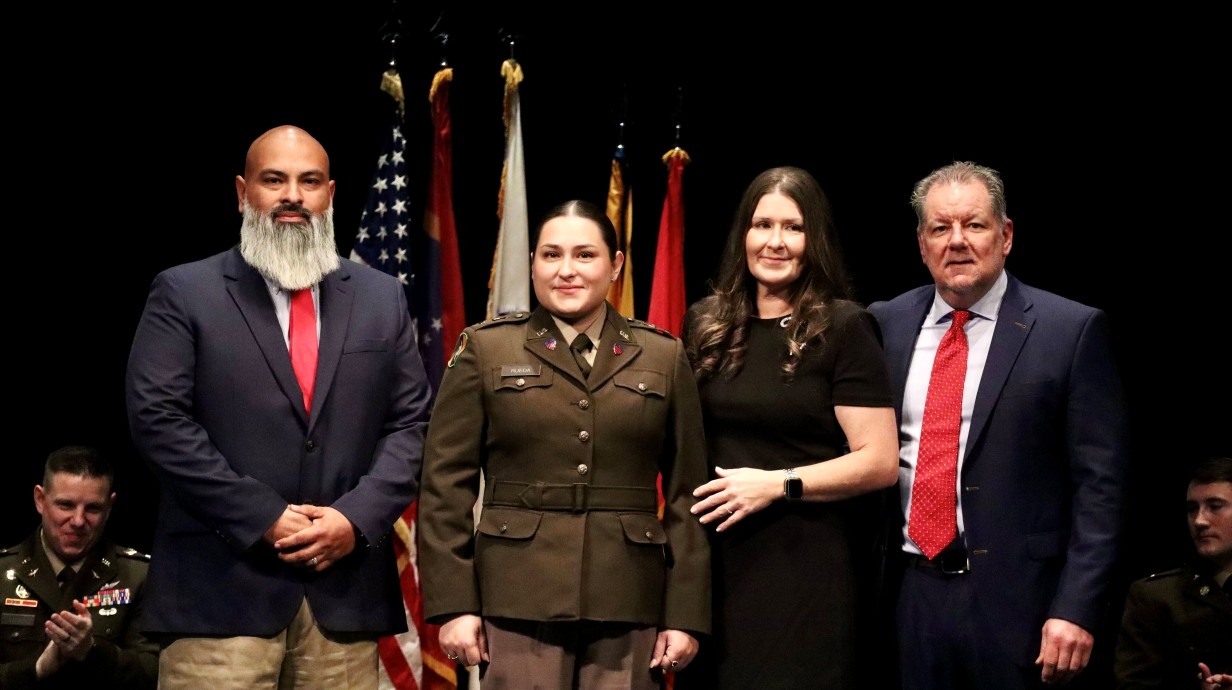
Training and Curriculum
The specific education you receive in Army ROTC will include leadership development, military skills, self management, and a wide variety of other skillsets that will improve your ability to serve as an office in the United States Army. This will take place both in the classroom and in the field, but you will have a normal daily schedule like all college students.
Army ROTC Basic Course
The Cadet learning outcomes are:
- Roles and Origins of the Army
- Army Customs and Traditions
- Branches of the Army
- Military Operations and Tactics
The Cadet learning outcomes are:
- Role of the Officer and Noncommissioned Officer
- Communications
- Code of Conduct
- First Aid
- Principles of War
- Military Operations and Tactics
Army ROTC Advanced Course
The Cadet learning outcomes are:
- Command and Staff Functions
- Nuclear, Biochemical and Chemical Warfare
- Law of War
- Weapons
- Human Behavior
- Math Reasoning
- Computer Science
- Military Operations and Tactics
The Cadet learning outcomes are:
- Military Justice
- Intelligence and Electronic Warfare
- Army Personnel Management
- Army Logistics
- Post and Installation Support
- Military Operations and Tactics
Summer Training Programs
Become immersed in the daily operations of different active-duty military sites. Explore potential career paths, practical leadership development, and real-world application of the skills learned in the Army ROTC program. All cadets must meet the eligibility criteria to be selected. Cadets may be eligible to compete to attend other Army schools not listed.
The Cadet Basic Camp Course, conducted each summer at Fort Knox, Kentucky, is an accelerated and fast paced 28 Day training event. It focuses on critical military and leadership skills taught during the first two years of the Army ROTC Basic Course Instruction (Freshman and Sophomore classes).
The Cadet Basic Course is based on a leadership development curriculum and situational training exercises that push cadets to their physical and mental limits, challenging them to discover their true leadership potential. When they finish, cadets are qualified to enroll in the Army ROTC Advanced Course (Junior and Senior classes). CDTs who have completed BCT or MSL 101 and 201 years consecutively do not have to attend basic camp.
The ROTC Cadet Advanced Leader Course is the most important training event for an Army ROTC cadet. This summer training is usually conducted after the Junior Year of the ROTC curriculum and is considered the "Capstone Training Event" of the Leadership Development Program.
The 38-day training event incorporates a wide range of subjects designed to develop and evaluate leadership ability, physical fitness and academic achievement. The challenges are rigorous and demanding, both mentally and physically. The Cadet Advanced Leader Course tests intelligence, common sense, ingenuity and stamina. These challenges provide a new perspective on an individual’s ability to perform exacting tasks and to make difficult decisions in demanding situations.
The Basic Airborne Course is a three-week training program conducted by the Airborne Department, USAIC, Fort Benning, GA, that trains students the use of the parachute as a means of combat deployment. Successful completion qualifies cadets to wear the Parachutist Badge.
You begin your first week on the ground, learning the basics of parachute landings, and start a vigorous training program. During the second week, called tower week, proper exiting of the plane will be mastered. As a cadet, you will be then given the opportunity to parachute from a 250 foot high tower. The third and final week is the jump week. Cadets make five jumps from either a C-130 or C-141, including one night jump and two combat jumps with full combat gear.
The AAS is a 10 day course of instruction that trains cadets on Combat Assault Operations involving associated equipment and U.S. Army rotary-wing aircraft. Successful completion qualifies cadets to wear the Air Assault Badge.
This is available at a number of installations, but the largest is located at the air assault home of Ft. Campbell, Kentucky. This eleven day course is very demanding both physically and mentally, involving obstacle courses and several long ruck marches. You will learn the basics of aircraft familiarization and recognition, slingload operations, and rappelling.
CTLT provides select Advanced Camp graduates the opportunity to increase their leadership experience by assignments to platoon leader or like positions with Active Army units or with government agencies for three weeks (CONUS) to four weeks (OCONUS). Refer to Annex A, Figure 1 (CTLT Training Opportunities).
You may also find yourself anywhere in the country, or overseas, involved in the Cadet Troop Leadership Training Program. This internship program places you in actual Army units acting as a real Lieutenant. This two or three week challenge is a definite learning experience, allowing you to gain a perspective on what you will be facing as future officer. Generally, you are placed in a platoon leader position, leading 30+ soldiers and responsible for millions of dollars of equipment. You receive a rate of pay and allowance similar to that at LDAC, you stay at the Bachelor Officer Quarters on that specific base, you train and lead soldiers, and receive an OER upon completion of the program. If you are assigned to a unit on jump status, and you are already airborne qualified, you may participate in unit jumps on a permissive basis if approved in advance. CTLT is the best way to familiarize yourself with a branch before having to choose your branch preferences during the accessions process at the beginning of the MS IV year.
CULP provides cadets the opportunity to spend up to three weeks immersed in foreign cultures, learning more about how other around the world view the U.S. and, in the process, learning more about themselves.
The Army recognizes the need for young leaders to develop more cultural awareness and foreign language proficiency skills. Now more than ever, cultural awareness training is a vital component to the ROTC curriculum. Overseas immersions help educate future leaders in ways the classroom cannot.
Cadets now have the opportunity to compete for immersion in more than 20 countries. These opportunities expose them to everyday life in different cultures and intensifies language study, which helps produce commissioned officers who possess the right blend of language and cultural skills required to support global operations in the 21st Century.
Participants experience up to three different venues during immersion, including host nation military-to-military exchange, humanitarian service, and education on the social, cultural and historical aspects of the country. In 2018, CU&LP deployed teams of SROTC Cadets (May thru August) to develop culturally astute future leaders, strengthen strategic relationships, and support theater security cooperation objectives. Cadet Command sent 959 Cadets and 150 cadre to 26 different countries supporting Combatant Command security cooperation lines of effort.
Cadet Intern Program (CIP), an initiative of ASA/MRA, allows cadets to work with the Department of the Army (DA), the Secretariat, Office of the Chief of Army Reserves (OCAR), National Guard Bureau (NGB), and the Office of the Secretary of Defense (OSD) for three weeks. These cadets receive an OER at completion.
This training is only available to nurse cadets and provides opportunities to develop and practice a clinical phase of instruction at Army Medical Command Treatment Facilities worldwide. The cadets receive an OER upon completion.
Army Science Board (ASB) is the newest program. Only one cadet will be selected to work with the ASB unit for approximately 38 days. This is a three-phase internship program. Initially, cadets will develop the Program of Instruction (POI) for ASB Internship Program with future studies in Technical and Tactical Opportunities for Revolutionary Advances in Rapidly Deployable Joint Ground Forces in the 2015-2025 Era. The cadets receive an AER upon completion.
Army Career Options
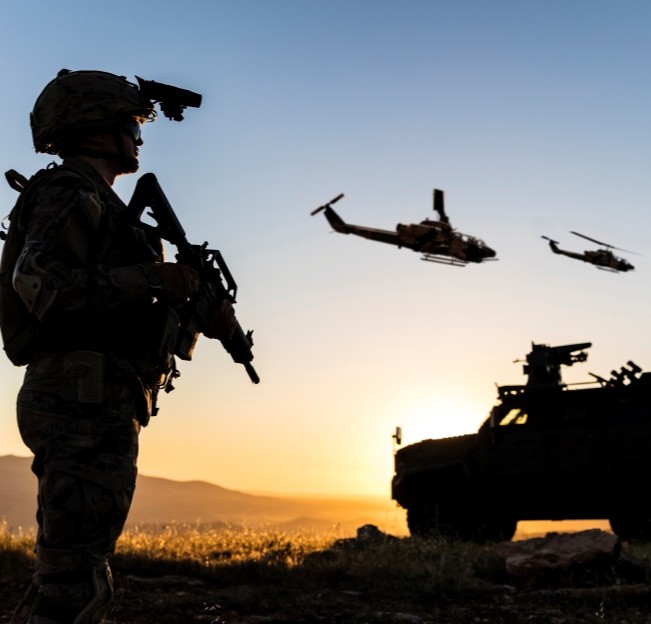
Combat Arms
- Armor
- Air Defense Artillery
- Aviation
- Engineers
- Field Artillery
- Infantry
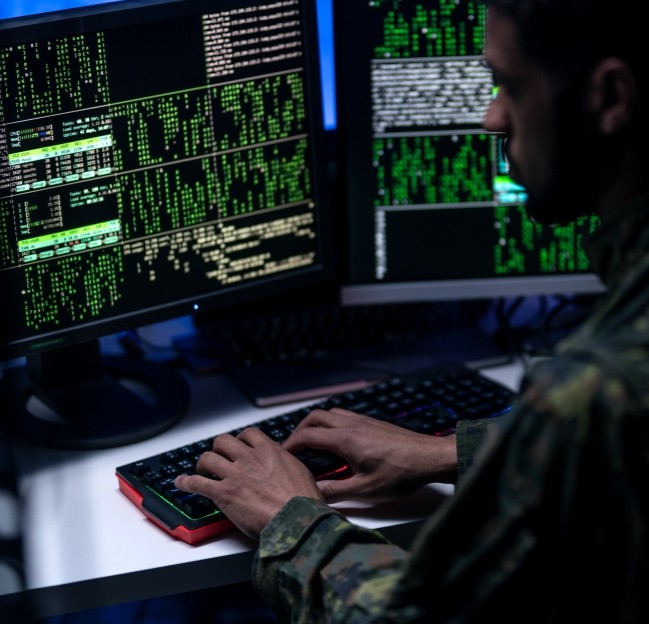
Combat Support
- Chemical Corps
- Military Police
- Military Intelligence
- Cyber
- Signal Corps
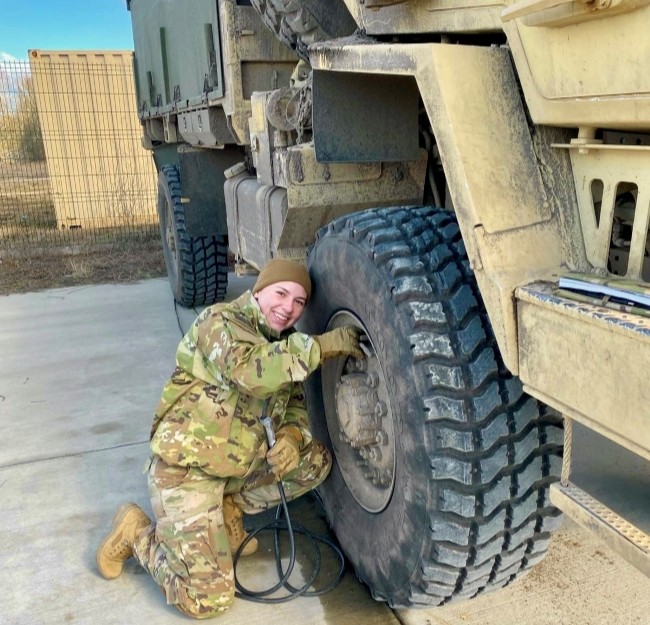
Combat Service Support
- Adjutant General
- Quartermaster
- Finance
- Ordnance Corps
- Transportation

Specialty Branches
- Medical Services
- Nurse Corps

